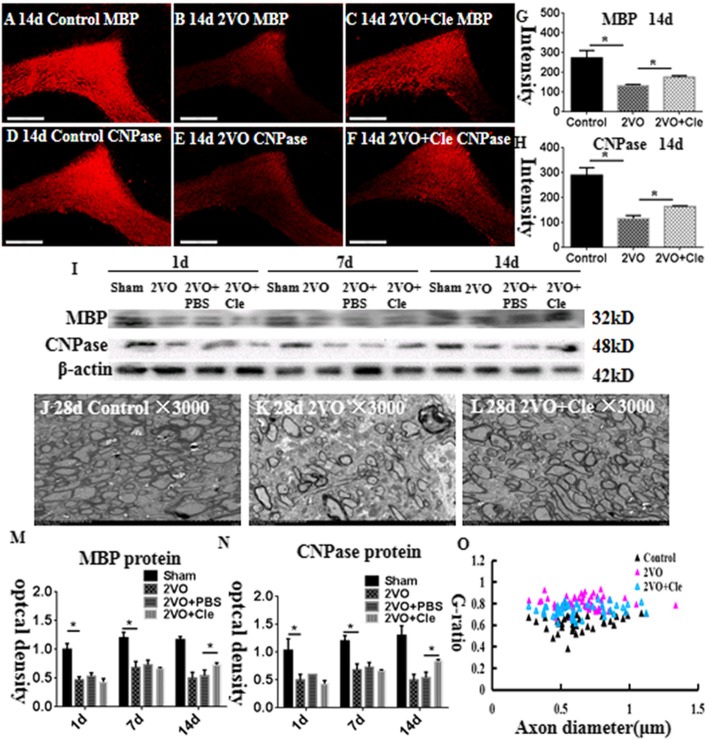Fig. 4.
Hypomyelination in the corpus callosum of rats at 14 and 28 days after the bilateral common carotid artery occlusion (BCCAO; a–h). Immunofluorescence staining showing myelin basic protein (MBP) and 2′,3′-cyclic nucleotide-3′-phosphodiesterase (CNPase) expression in the corpus callosum of rats at 14 days after the BCCAO (b and e) and clemastine injection after BCCAO (c and f) and their corresponding controls (a and d). Bar graph in g and h shows a significant decrease in the immunofluorescence intensity of MBP and CNPase in the corpus callosum at 14 days after the BCCAO when compared with their corresponding controls; clemastine reversed these changes. Panel I shows MBP (32 kDa), CNPase (48 kDa), and β-actin (42 kDa) immunoreactive bands. Panels m and n show bar graphs depicting significant decreases in the optical density of MBP and CNPase at 1, 7, and 14 days following the BCCAO when compared with their corresponding controls; clemastine reversed these changes at 14 days (*P < 0.05). j–l Electron micrographs showing hypomyelination and aberrant ensheathment of axons in the corpus callosum at 28 days after the BCCAO. The number of myelinated axons in the corpus callosum of 28-day rats in BCCAO group (k) decreases remarkably when compared with their corresponding controls (j), treated with clemastine which could reverse the hypomyelination after the BCCAO (l). O Scatter plots of g-ratios against axon diameters in the corpus callosum at 28 days are shown. G-ratios increased after BCCAO when compared with their corresponding controls; clemastine reversed the changes, indicating that clemastine could promote myelin formation in the myelinated fibers. N = 3. Scale bars: a–f, 200 μm; j-l, 10 μm

